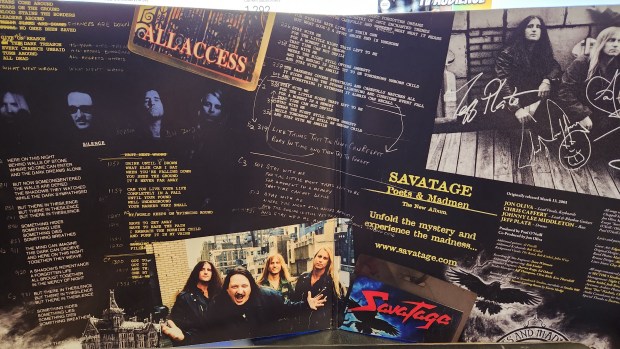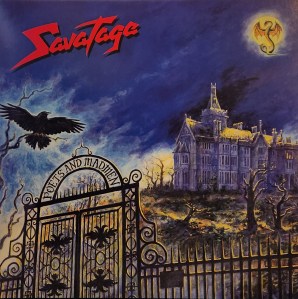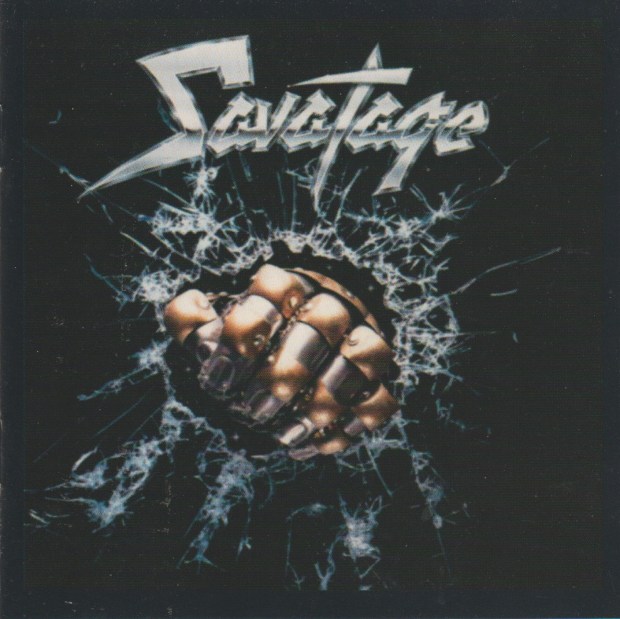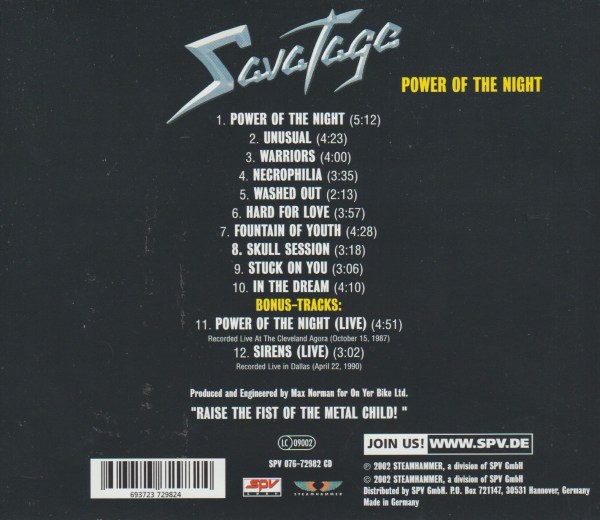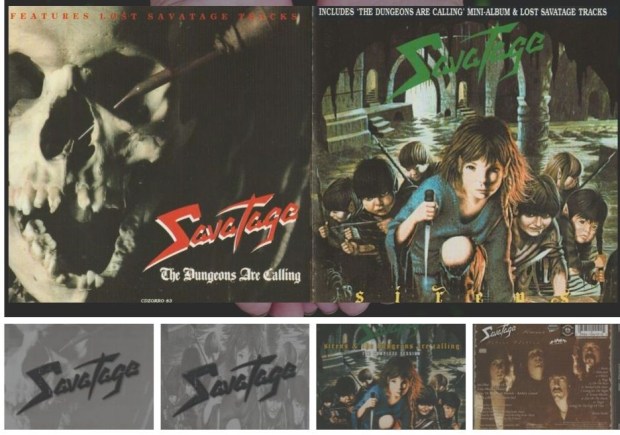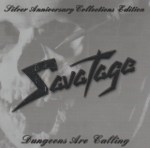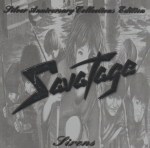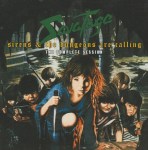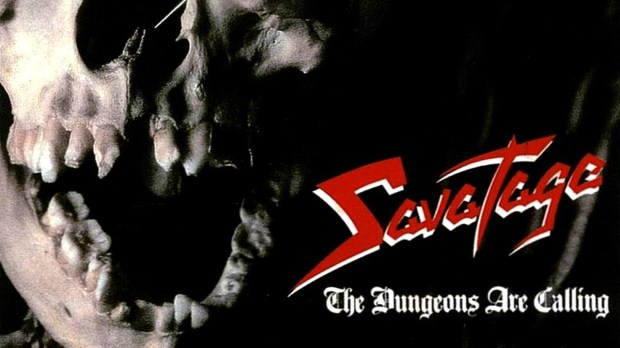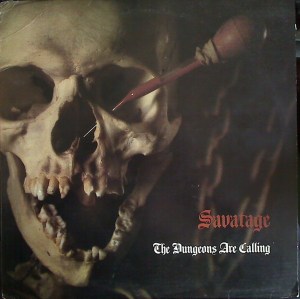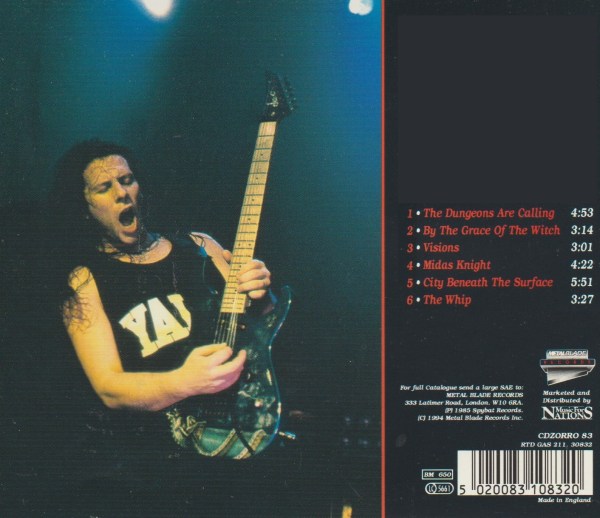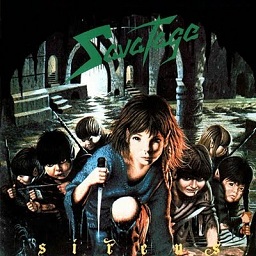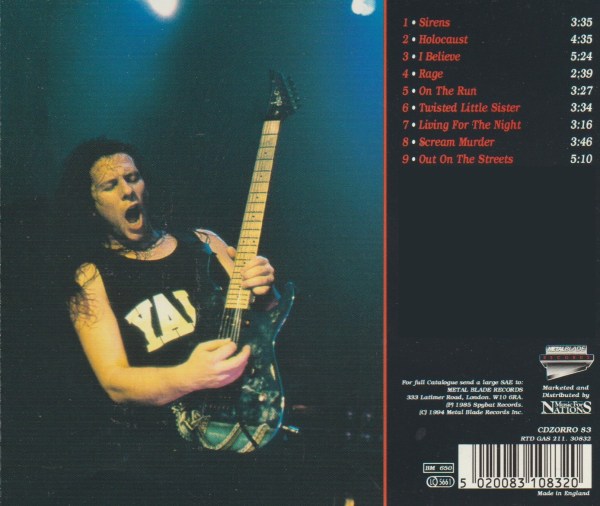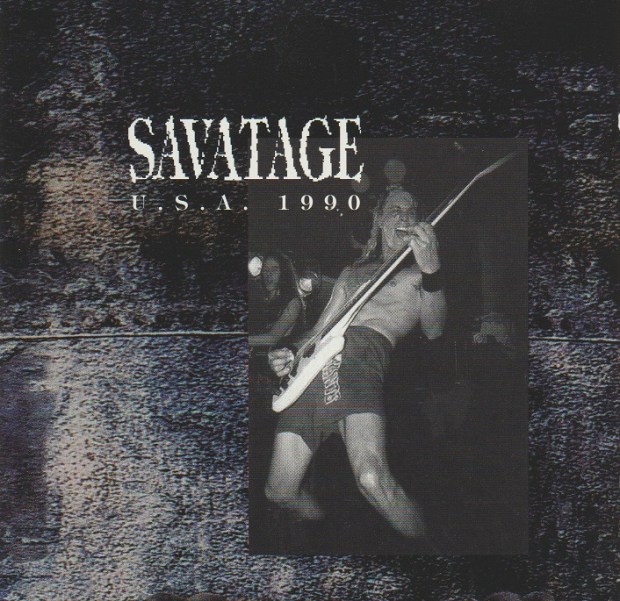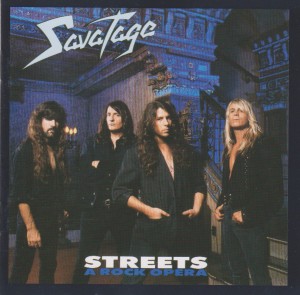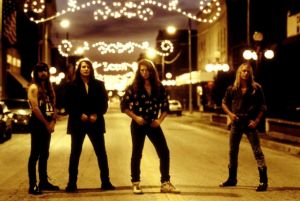SAVATAGE! This Florida metal band reigned from 1979 to 2002, and is now back ready to unleash a new album called Curtain Call! They never received the recognition they deserved over the course of 12 mostly excellent albums. Let’s fix that here and now!
This list is part of a collaborative effort with 80sMetalMan! You can check his list here.
10. “Handful of Rain” from Handful of Rain (1994)
We begin our story with tragedy, but also triumph. Lead guitarist Criss Oliva was killed by a drunk driver, almost ending the band permanently, and shattering the soul of his brother Jon. Jon Oliva was not even a member of the band anymore, having abdicated the mountain king throne to new singer Zack Stevens a year prior. Undaunted, Oliva wrote and recorded almost all the instruments on the next Savatage album Handful of Rain. Even though bassist Johnny Lee Middleton and drummer Steve “Doc” Wacholz are pictured inside, they did not play. Jon did. Joining him on lead guitar was former Testament master-shredder Alex Skolnick. An immensely powerful team up. They produced a somber album, but not without power and thrills. The title track, available as a 5:25 extended edition or the standard 5:02 version, boasts acoustic verses and a powerful chorus that will stay with you for days.
9. “Morphine Child” from Poets and Madmen (2001)
The final Savatage epic from the final Savatage album. Jon Oliva was back on lead vocals. Zack Stevens departed to form his own band, Circle II Circle. This song utilizes a powerful, relentless riff and a host of backing singers taking care of a complicated vocal counterpoint. Different lyrics and melodies all overlap to form a cohesive and weighty segment of an already powerful song. With piano and guitars intertwined with equal emphasis, Savatage may have taken their new operatic metal style to its peak here. Though a comeback is planned, the band has remaining largely inactive ever since. Regardless, at least they finished their first life in style, and with masterful progressive metal music.
8. “Warriors” from Power of the Night (1985)
Though this song commences with a corny keyboard bit and a ballady melody, it is far from that! The battle grunts of the “warriors” soon join in with a sharp metal riff. An alloy of iron and titanium, “Warriors” boasts a relentless chorus. The verses are fun too. “Armed to attack! The soldiers react!” Not poetry, but it matters not when Oliva screams. This is simply heavy metal, down to the basics, and executed with youth and naivete. The thing is: it’s really good and catchy!
7. “Sirens” from Sirens (1983)
A shorty, at under four minutes. The tempered steel of Criss Oliva’s riff is the main hook. Much would improve later on, such as Jon’s lyrics and the band’s writing skills, but they had everything they needed from the get-go. There’s a slower breakdown in the middle that only serves to re-ignite the powerful riff later on. Oliva’s shrieking was already in place, fully formed and under his complete control. Because the song is so short, you just have to go back and play it one more time.
6. “Strange Wings” from Hall of the Mountain King (1987)
Producer/manager Paul O’Neill was working with a little band called Badlands in 1989, featuring former Black Sabbath singer Ray Gillen on lead vocals. He made a hell of an impression before Badlands as a backing vocalist on “Strange Wings” by Savatage! This song, which boasts a powerfully simple riff, contains one of Savatage’s mightiest choruses! A melancholy metal song with oodles of power, “Strange Wings” is one of Savatage’s top deep cuts. There are many to choose from, but Ray’s singing on this one sets it apart. His voice, mixed with Jon Oliva’s, offers a rare metal duet of stainless steel.
5. “Hall of the Mountain King” from Hall of the Mountain King (1987)
A classic Criss Oliva riff, backed by the haunting screams of brother Jon! This song introduced Savatage to the metal masses. Few songs can top the power of its mighty riff, or the unholy notes that Oliva hits on the chorus. Not overly complex, but neither is it simple. After Criss’ solo, Jon simply lets loose with the howls of a banshee gone mad! Many would rank this song much higher than #5. Perhaps the Metal Man is one. It is extremely difficult, since Savatage have so many songs of different flavours. Of their era of pure metal majesty, this song is tops.
4. “The Wake of Magellan” from The Wake of Magellan (1999)
Savatage have utilized counterpoint vocals numerous times on their albums from Handful of Rain to Poets and Madmen. It is arguable that “The Wake of Magellan” is their most effective use of the technique. Multiple vocal parts and lyrics overlap over each other, with uncountable Zacks singing complementary parts over each other. Fortunately, the melodies are strong enough to stand out in the storm! While the band and orchestra cooks behind, Zack Stevens sings all the parts, overdubbed for simultaneous power. The first layer: “Don’t see the storms are forming, don’t see or heed the warning, don’t hear the sound of tyrants, surrounded by the silence.” Then a second Zack joins, singing the same. A third Zack emerges overtop, singing the extremely fast and challenging lines: “Columbus and Magellan and De Gama sailed upon the ocean in a world of ignorance with thoughts so primitive. That men were killed with no more will than that they simply had the notion, but in this world of heartless men this thing they never did.” Imagine singing that live, which the band had to do, at machine gun speed! Another Zack doubles those lines. Then a fifth Zack joins: “Don’t hear it, don’t hear it…” Then another Zack: “Got to keep it underground, pretend you never heard a sound.” More Zacks join with the lines “If they find it, kill it, blind it,” and “Lord tell me what is to be,” until all the voices coalesce together in the line “They whisper, and I…” Has there ever been a more epic song in any genre?
3. “Edge of Thorns” from Edge of Thorns (1993)
New singer. New lease on life. Zack Stevens was sometimes compared to Geoff Tate when he first debuted in 1993 on Edge of Thorns. The first single from the first album of a new era, combining the metal of Savatage’s early years and the piano epics of the previous two records. The brilliant title track from Stevens’ debut still raises goosebumps on the arms. An apex of this style of metal, “Edge of Thorns” has no dull surfaces. Every edge cuts deep, the scarlet blood stains lingering in your heart forever. “I have seen you on the edge of dawn, felt you here before you were born. Balance your dreams upon the edge of thorns…but I don’t think about you anymore.” Yet he clearly does. This theme recurs through the album on songs like “Conversation Piece”. Another genius Criss Oliva guitar solo is the cherry on top. Few bands can meld their different styles from separate eras together like Savatage did on “Edge of Thorns”. A masterpiece of a song.
2. “Gutter Ballet” from Gutter Ballet (1989)
I’ll never forget hearing that opening piano figure. Loosely, Jon Oliva plays: “ding, ding, ding…” Then as he plays the notes become stronger and the tempo more steady. Suddenly the band crashes forth and “Gutter Ballet” careens through your stereo, into your soul. Savatage had never incorporated piano like this before, and by breaking new ground they broke down walls. No longer were they a simple heavy metal band. The doors to a whole new world of concept and drama had opened. Welcome to the Gutter Ballet. This track combines an epic piano melody with incendiary guitar riffs, an orchestra, and street-smart Oliva/O’Neill lyrics about the nasty gutters of New York City. “Balanced on their knives, little parts of lives, such a strange reality. Kill the unicorn, just to have its horn, soon he’s just a fantasy…” And the Criss Oliva guitar solo! A composition unto itself, backed by strings. Power, emotion, skill and fire combined together into one incredible song. An epic song that few bands could top. Few…except Savatage.
1. “Believe” from Streets: A Rock Opera (1991)
Within the context of the Streets story, the main character D.T. Jesus witnesses a luminous spirit emerge from a dying homeless man, that he follows up several flights of stairs to a roof of a building. D.T. opens his heart, and hears the voice of God. “Believe” is the perfect ending to an epic emotional journey. With all the power that Savatage can muster — overblown, dramatic, and pompous — “Believe” ends the rock opera (and this list) properly. Interestingly, it retains an epic section that was lifted directly from “When the Crowds are Gone”, as the two albums share a genesis. So epic is this segment, that Savatage had to re-use it. Then later, on the Savatage album Handful of Rain, part of it was re-used again, along with other parts of “Believe”. “Believe” ends this album on the bright up-note that you want a story to end with, your soul awash with light and musically uplifted. “I’ll be right there, I’ll never leave, and all I ask is believe”


